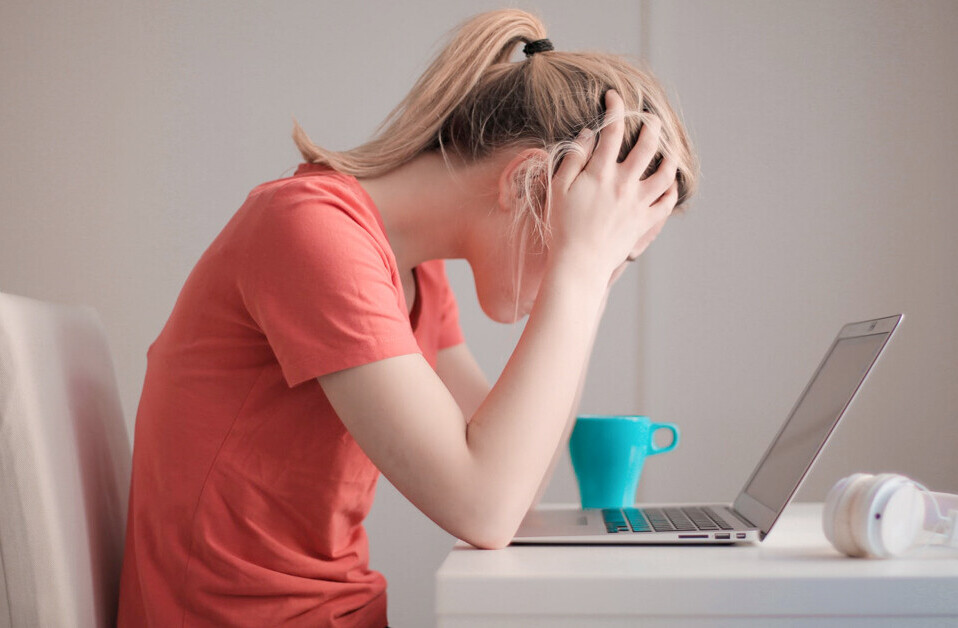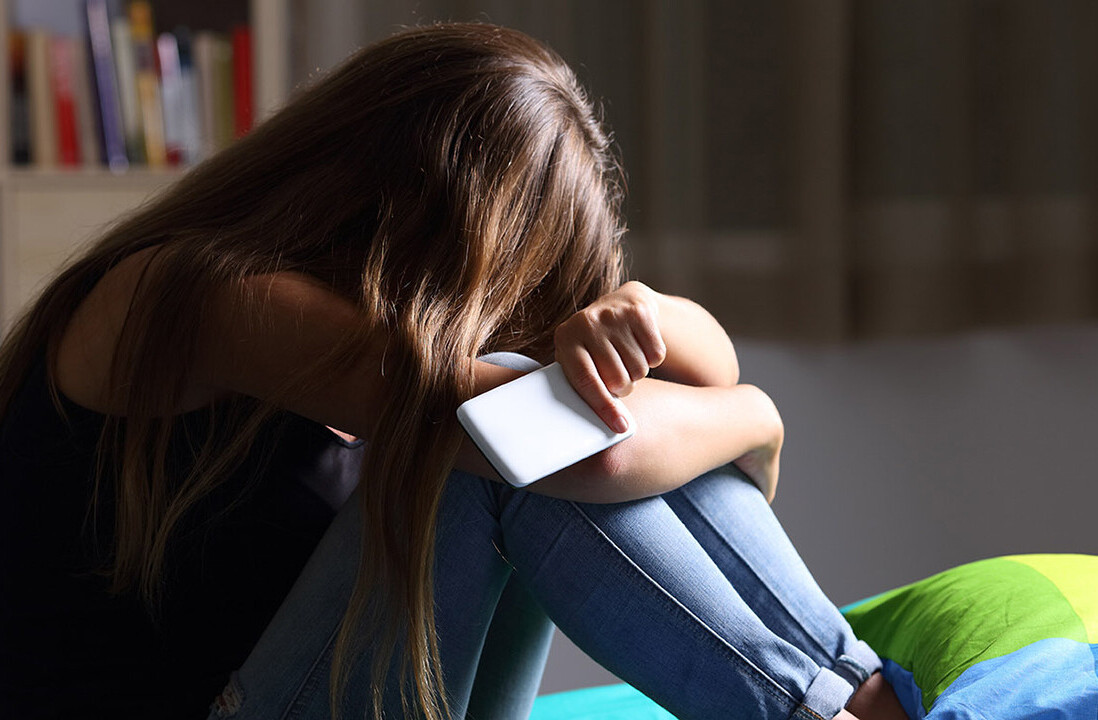
Did you know TNW Conference has a track fully dedicated to bringing the biggest names in tech to showcase inspiring talks from those driving the future of technology this year? Nir Eyal, who authored this piece, is one of the speakers. Check out the full ‘Impact‘ program here.
It feels impossible to tell if the technology our kids use should be celebrated or feared. A few years ago I wrote a book, Hooked, about how technology can be used to change our habits. I intended the book to teach startups how to build healthy habits, but now I’m not so sure. With headlines telling us technology is hijacking our brains, I started second-guessing the impact of our devices, especially when it comes to our kids.
How alarmed should we be? Is this a crisis or a fear frenzy? I wanted to understand what the studies really tell us about the effect personal technology is having on our children.
One side clearly believes the kids are not okay. “It’s not an exaggeration to describe iGen as being on the brink of the worst mental-health crisis in decades,” wrote Dr. Jean Twenge, a professor of Psychology at San Diego State University in an article in The Atlantic.” Much of this deterioration can be traced to their phones.”
According to the tech critics like Twenge, this generation can’t look at each other in the eye, isn’t comfortable in conversation, and therefore can’t form deep relationships. They are cyberbullied, like-obsessed, and more prone to killing themselves, she says. According to Twenge’s article, the teen suicide rate is now higher than the teen homicide rate, with three times as many 12-to-14-year-old girls and twice as many boys killing themselves in 2015 as in 2007.
Jan Odiaga, Program Director of the Pediatric Primary Care Nurse Practitioner Program at Rush University College of Nursing, says she now asks kids questions about technology use at their annual physicals. Odiaga is a mother of two daughters, ages 14 and 16. “It is an epidemic. I think the thing that scares me the most is that there’s so many mental health issues, depression, and anxiety,” Odiaga says. “People are tracking it back to social pressures and social media. That frightens me. I think it’s going to escalate and get worse… What’s going to happen next?”
As a father of a pre-teen myself, I worry. It’s easy to get worked up about what technology might be doing to kids’ brains. However, there is also an argument to be made that it’s the adults, and not the teens, being overly dramatic.
What the Studies Really Say
Studies like Twenge’s work like this: researchers look for correlations between various things to try and make connections. If thing A and thing B go up over the same period of time, researchers conclude there may be something there.
For example, if Ivan the ice cream man opens a new ice cream shop and subsequently sales of ice cream in the town rise, one might conclude that the store opening was correlated with more ice cream consumption. Taking this one step further, some might believe the store caused people to eat more ice cream.
However, there might be other factors at play that account for the change in the town’s ice cream eating. If Ivan opened his ice cream shop in the heat of June, rather than cold of December, then we might wonder whether the weather had something to do with the rise in sales. Variables, like the weather, could affect the rise in sales of ice cream as might the opening of Ivan’s shop. Ivan’s shop could have driven more ice cream consumption, but we wouldn’t know how much Ivan’s ice cream shop accounted for the change unless we excluded other variables, such as the temperature outdoors.
It’s true that in Twenge’s study, social media exposure was correlated with depressive symptoms in some adolescents. But there’s much, much more to the story than Twenge and most journalists who covered the study let on.
Firstly, there are many potential variables that correlate with adolescent depression. Household income, parental education, and family history all play a role, just as the weather plays a role in ice cream consumption. If you were to guess how much social media use accounted for an increase in depression in Twenge’s study, what would you expect? The study was cited hundreds of times in news outlets around the world, which ran headlines like, “The Risk Of Teen Depression And Suicide Is Linked To Smartphone Use, Study Says” What would you guess? 80% of the correlation? 70%? Not even close.
According to an article in Wired, in Twenge’s study, “Social media exposure could explain 0.36% of the covariance for depressive symptoms.”
That’s not 36%. It’s not even 1%. That’s 0.36%.
The Wired article continues, “That 0.36% means that 99.64% of the group’s depressive symptoms had nothing to do with social media use.” The article quotes Dr. Andrew Przybylski, who the author describes as, “a psychologist at the Oxford Internet Institute with more than a decade’s experience studying the impact of technology.” He told Wired, “I have the data set they used openly in front of me and I submit to you that, based on that same data set, eating potatoes has the exact same negative effect on depression.”
Furthermore, even that weak correlation “didn’t hold for the boys in the dataset,” only the girls. Why not? Nobody knows. “In datasets as large as these, it’s easy for weak correlation signals to emerge from the noise,” the Wired article author concluded.
In a rebuttal to The Atlantic article that said kids are on the brink of the worst mental-health crisis in decades, Dr. Sarah Rose Cavanagh, a PhD and associate professor at Assumption College in Boston, wrote in Psychology Today that “the data the author chooses to present are cherry-picked, by which I mean she reviews only those studies that support her idea and ignores studies that suggest that screen use is NOT associated with outcomes like depression and loneliness.”
One of many studies not cherry-picked was conducted by Christopher Ferguson of Stetson University and published in the journal Psychiatric Quarterly. Ferguson’s study found only a negligible relationship between screen time and depression. Ferguson said in an article in Science Daily, “Although an ‘everything in moderation’ message when discussing screen time with parents may be most productive, our results do not support a strong focus on screen time as a preventative measure for youth problem behaviors.”
Tech critics like Twenge tend not to discuss the nuances of what their own studies reveal about how time spent online affects teens. But as so often is the case, the devil is in the digital details. A closer read finds the correlation only with extreme amounts of time spent online. The Twenge study shows teenage girls who spent over five hours per day tended to have more depressive or suicidal thoughts. But common sense would have us ask whether it’s just as likely that kids who have a propensity to spend that much time online have other issues in their lives. Isn’t five hours a day on any form of media a symptom of a larger problem? In fact, the Twenge study found that kids who spent two hours or less online per day did not have higher rates of depression and anxiety compared to controls.
A study conducted by Przybylski found mental well-being actually increased with moderate amounts of screen time before declining for excessive users. However, “Even at exceptional levels, we’re talking about a very small impact,” Przybylski told BuzzFeed.“It’s about a third as bad as [the effect on well-being of] missing breakfast or not getting eight hours’ sleep.”
More Tech, Less Death
Even if we give Twenge’s study the benefit of the doubt and believe there is something happening to adolescents as a result of excessive social media use, there are still some important unanswered questions. For one, if we’re going to draw correlations between social media and bad things like depressive symptoms and suicide, shouldn’t we also look at the positive trends as well? In the same period of time that personal tech use has increased, many of the hallmarks of self-destructive teenage rebelliousness have decreased precipitously.
Nationwide, the juvenile arrest rate for vandalism fell 75% between 1994 and 2015. The past-year use of illicit drugs other than marijuana for eighth, 10th, and 12th graders came in at the lowest level in the 40 years of the survey. Teen pregnancy, birth, and abortion rates in the United States all reached historic lows.
The fact that teen suicide rates are now higher than the teen homicide rates is largely due to the remarkable drop in homicides, which have fallen far faster than suicides have risen. In California for example, “Social trends among California youth have been spectacular,” gushed the The Sacramento Bee recently. “Over the last generation, rates of arrests of Californians under age 20 have fallen by 80%, murder arrest by 85%, gun killings by 75%, imprisonments by 88%… Back in 1980, teenagers comprised 27% of California’s criminal arrests. Today, 9%. Anecdotes of kids gone wrong remain, but they’re rarer than ever.”
Of course, like depression, these are correlated factors and it’s difficult to draw conclusions about causation. There are certainly other factors at play keeping kids safe. But it’s worth considering whether tech use may be curtailing all sorts of dangerous behaviors as kids find less harmful ways to spend their time. A healthy amount of tech use may provide kids a way to socialize and blow off steam online instead of doing destructive things offline. Furthermore, perhaps knowing friends have cameras in their pockets reduces the likelihood kids do things in the real world they wouldn’t want to be posted on Instagram?
Critics blaming technology for kids’ ills also gloss over what exactly kids do online. Studies like Twenge’s classify all time spent on social media together, denying the reality that people do all sorts of things on the web, some healthy and some not so healthy. Is a teenager spending time online being bullied or looking up ways to empower themselves and building confidence on a forum for people being bullied? Twenge’s study lumps both activities together.
How you feel after using the web depends on how you use it. Facebook admits that spending time on its site can decrease feelings of well-being when the service is used passively.14 Scrolling mindlessly past pictures of your friends having fun without you doesn’t make you feel good. However, when you interact with others’ posts — commenting, posting, and liking — studies have found your well-being increases and you feel more connected to people you care about.15
“I think there’s a lot of good stuff,” admits Odiaga, the nurse practitioner and concerned mother who asks kids about tech use at their annual physicals. “Good can come out of it. It’s not all bad,” Odiaga admits. Although positive stories don’t make headlines and stoke fears the way those about depression and suicides do, the majority of teens use technology in positive ways. Some write music, create blogs, and use social media to stand up for social causes they believe in or stick up for those being bullied. Tech can open up new worlds for kids and give them skills they couldn’t learn otherwise
Why Do Things Feel So Scary?
“I think we need to keep some historical perspective and think, ‘What is our future going to be?’” Odiaga says. Although thinking “this time is different” is a common reaction to rapid technological change, history tells another story.
Swiss scientist Conrad Gessner worried about hand-held information device causing “confusing and harmful” consequences.16 That was 1565. He was talking about books.
In 1883, a New York medical journal predicted a new norm would “exhaust the children’s brains and nervous systems with complex and multiple studies, and ruin their bodies by protracted imprisonment.” He was referring to public education.
In 1936, kids were said to “have developed the habit of dividing attention between the humdrum preparation of their school assignments and the compelling excitement of the loudspeaker,” from the radio, according to the music magazine Gramophone. “At night the children often lie awake in bed restless and fearful, or wake up screaming as a result of nightmares brought on by mystery stories.”
It seems outlandish now, but leaps in technological innovation are often followed by moral panics. “Each successive historical age has ardently believed that an unprecedented ‘crisis’ in youth behavior is taking place,” wrote Dr. Abigail Wills, an Oxford historian writing about youth culture and crime in Slate. “We are not unique; our fears do not differ significantly from those of our predecessors.”
It could well be that today’s technology does have negative consequences. However, it’s hard to know if the current technology backlash is simply society’s way of adjusting to some of the particularly bad elements of tech overuse and misuse. If fear turns in to action, we can adjust our tech use to moderate the harmful aspects while taking advantage of the benefits, just as we did with previous technologies. We can also adapt our technology use with new tech tools that help our kids’ moderate overuse.
However, if we’re paralyzed by our fears and try to ban our kids from using their technology instead of helping them (and us) learn to use it responsibly, we may be doing more harm than good. Tech is powerful, and now is the time to teach kids to use that power rather than pretend we can keep them from it.
A research overview conducted by UNICEF found that the middle way is the best way. “In terms of impact on children’s mental well-being, the most robust studies suggest that the relationship [with technology] is U-shaped,” the study says, “where no use and excessive use can have a small negative impact on mental well-being, while moderate use can have a small positive impact.” Instead of headline-grabbing hysterics, moderation and adaptation seem to be the answer after all.
This article was originally published on Nirandfar.com by Nir Eyal. You can read the original article here.
Get the TNW newsletter
Get the most important tech news in your inbox each week.




